The 5 conversations of a Localization Manager
The Lord of the Rings trilogy is one of my favorite trilogies. I've always been fascinated by the vast and mythical world Tolkien created. I remember my teenage years, devouring the books and learning how the Hobbits, Ents, and Elves lived… It seemed to me then (and still does) like a truly fascinating world. I still have the movies I bought a few years ago, and usually during Easter in recent years, I watch at least one of them; this Easter was no exception!
My “treasure”… The Lord of the Rings Collector’s Editions
I usually watch them during one of those quiet Easter afternoons when I’m alone in the living room. But little by little… that peaceful moment ends. Sooner or later, someone walks in and joins me.
Sometimes it’s my wife, who stops by and says,
“Are you here again with the orcs? I don’t know how you enjoy watching that movie… they’re so ugly!”
Then it’s my kids. My eldest son might come in and ask:
“Has Frodo thrown the ring already, or is he still wandering around with those hairy feet?”
However, the comment that actually inspired me to write this post came from my youngest son. He asked:
“What’s going on with that Gollum? He talks so weird… sometimes he seems nice, but sometimes he’s mean. I don’t get it, why is he like that?”
Why I see Gollum in my job as a Localization Manager
The truth is, the character of Gollum, along with his multiple personalities, fascinates me the most in this saga. And I believe that, in a way, we Localization Managers have a bit of Gollum in us too ☺️.
What do I mean by that?
Well, just like Gollum constantly shifts between his personas, a Localization Manager must also adapt their “personality” to different situations and stakeholders to do a good job and be effective.
In the business world, this is called “wearing different hats.” It definitely sounds better than saying we behave like Gollum! But the truth is that being a Localization Manager is a peculiar role. To be effective, we must continuously adapt to our environment.
We’ve all seen job descriptions that list skills like adaptability, flexibility, and empathy… and they’re not wrong. A good Localization Manager (or Localization Test Lead, Globalization Manager, Team Manager—insert your title here 🥳) must easily switch contexts and communication styles.
Honestly, our ability to adapt might even outshine Gollum’s! And we do this every day through the different conversations we have.
Let’s explore these conversations, these hats we wear, or better yet, the different “Gollums” we become!
1. The Conversation with C-Level Executives
This is one of the most demanding types of conversations. It is often stressful because it pushes us outside our comfort zone.
With the C-suite, we don’t focus on operations like translation memories or terminology workflows. Those are irrelevant at this level.
Instead, this conversation is all about strategy and how the Globalization team contributes to the company’s growth and results.
We need to speak in terms they care about:
Market entry strategies
Budget planning to support localization goals
KPIs that matter to leadership:
International market growth rate
Relative market share
ROI in localization
Opportunity cost
Responsibility mapping (local offices vs. HQ)
Global growth plans (1–3 years)
Localization support for comms (social media, PR, etc.)
Compliance with local regulations
In-house vs. outsourcing analysis (SWOT)
Customer support strategy (hours, location, channels)
Local pricing strategy
In short, the conversation with the C-suite is about strategy, business value, growth, and impact.
2. The Conversation with Directors, Product Owners, or Portfolio Managers
This conversation is more operational and focused on execution. Unlike the high-level C-suite talks, here we get into the tangible details:
Choose pilot countries and test strategies
Analyze competitors and plan differentiation
Define product launch roadmaps
Align brand requirements
Discuss localization needs like rebranding, logos, landing pages
Prioritize markets (Tier 1, Tier 2, etc.)
Allocate resources
Plan for risks
The conversation at this level is about aligning processes, deliverables, and timelines with overall product goals.
3. The Conversation with your Localization team
This is usually the most comfortable conversation for a Localization Manager, our “home tribe.” Many of us come from linguistic or testing backgrounds, so we speak the same language here.
Typical discussion points include:
Glossary alignment
TMS setup and content pipelines
Internationalization best practices
Terminology mining
Content prioritization
Team goals
Evangelization workshops for internal teams
Style guides and UX writing rules
Handling of complex languages (Arabic, Japanese, etc.)
LQA programs and automation
Localization production metrics
This conversation is focused on execution and ensuring the quality of the localized content.
4. The Conversation with Your Linguistic Service Provider (LSP)
This one is different because it’s with an external partner. Even if the relationship is great, it's not the same as working with internal teams.
Here, the focus is on collaboration and performance:
KPIs for quality and delivery
Workflow setup (sending and receiving content)
On-time delivery tracking
Rate discussions (per word, hourly, LQA, PM fees)
Continuous delivery framework
SLA and partnership agreement reviews
Forecasts and workload planning
Areas for improvement
New services (e.g., MT, AI-based offerings)
The conversation with your vendor focuses on cost models, quality, service opportunities, and preparing for upcoming demand.
5. The Conversation with your direct reports
This is the most personal and human of all conversations. It usually happens in 1:1s and can touch on some operational topics, but it’s also about people.
Topics may include:
Career development plans
Skill-building and growth areas
Personal well-being
Building trust and empathy
Removing blockers and providing support
This conversation is about helping each team member find their path and grow so they can become the best possible version of themselves.
In conclusion, we Localization Managers wear many hats… or maybe we’re just channeling our inner Gollum 😄. Either way, adaptability is at the core of what we do. And the better we master these conversations, the more impactful we become.
This list of conversations may seem a bit daunting at first. But when you realize that you're likely switching between many of them in a single day and that people expect you to change hats instantly, it stops being daunting and becomes... well, downright scary! 😅
But hey, no fear!
The goal of identifying these hats is simple: to help you become more effective by recognizing the type of conversation needed in each moment.
Now it’s your turn:
Which hats do you wear most often?
Which Globalization or Localization conversations are you having with your stakeholders?
Which hats do you feel most confident wearing?
I wish you (and myself, too!) a great week ahead and lots of success navigating all these different conversations we need to master to shine as Localization Strategic Partners.
@yolocalizo
Click HERE to download the infographic

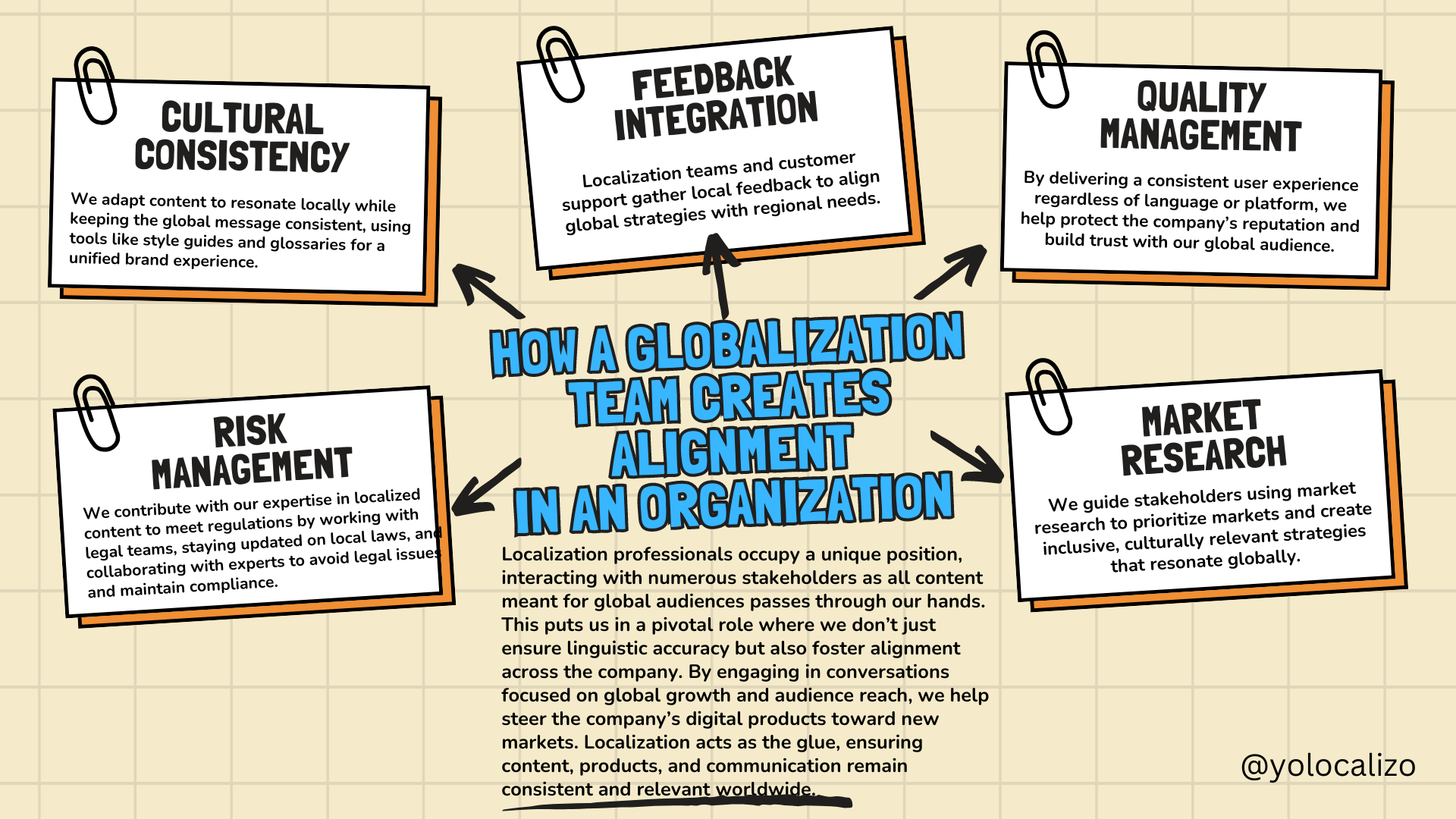
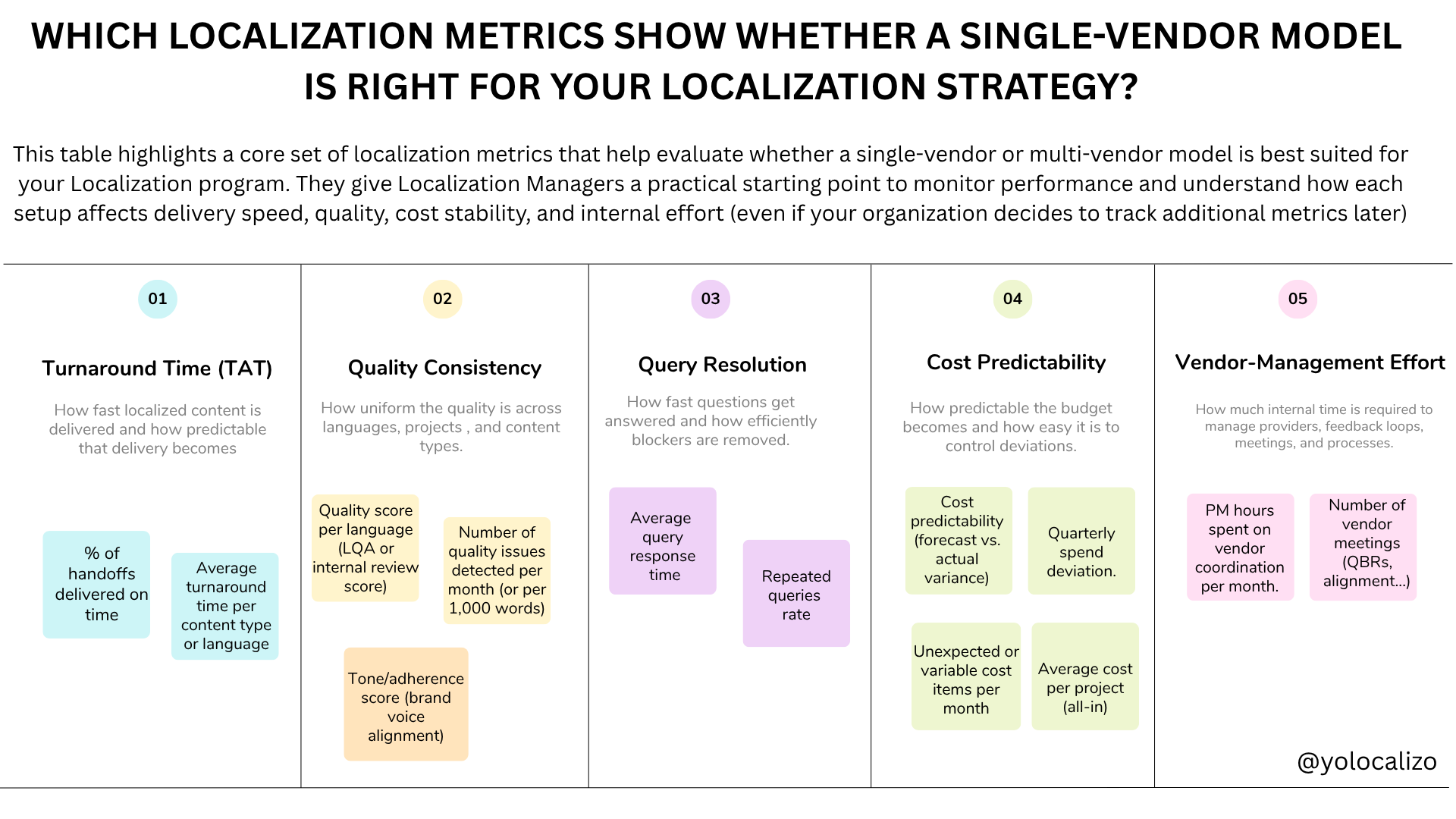




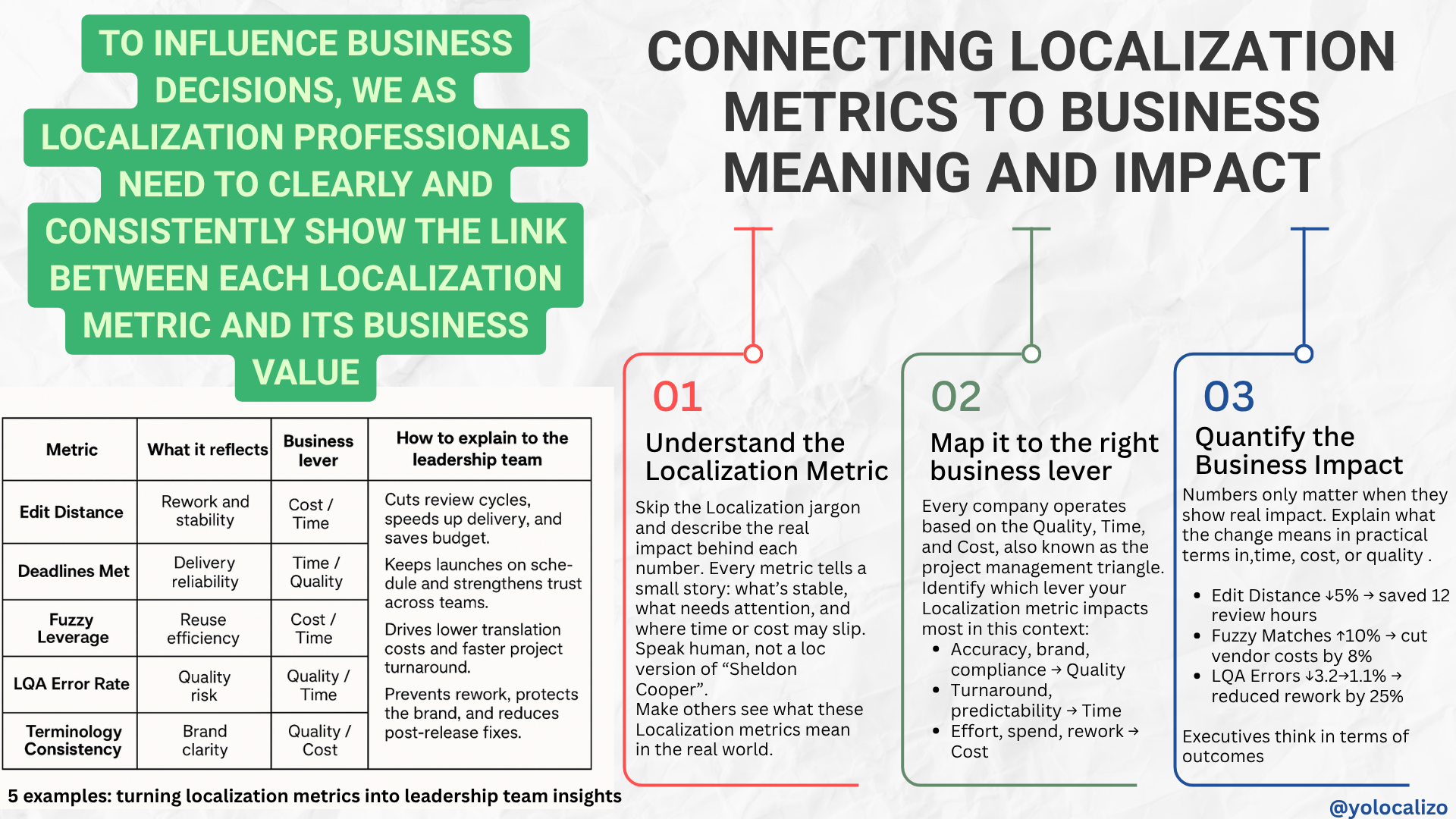







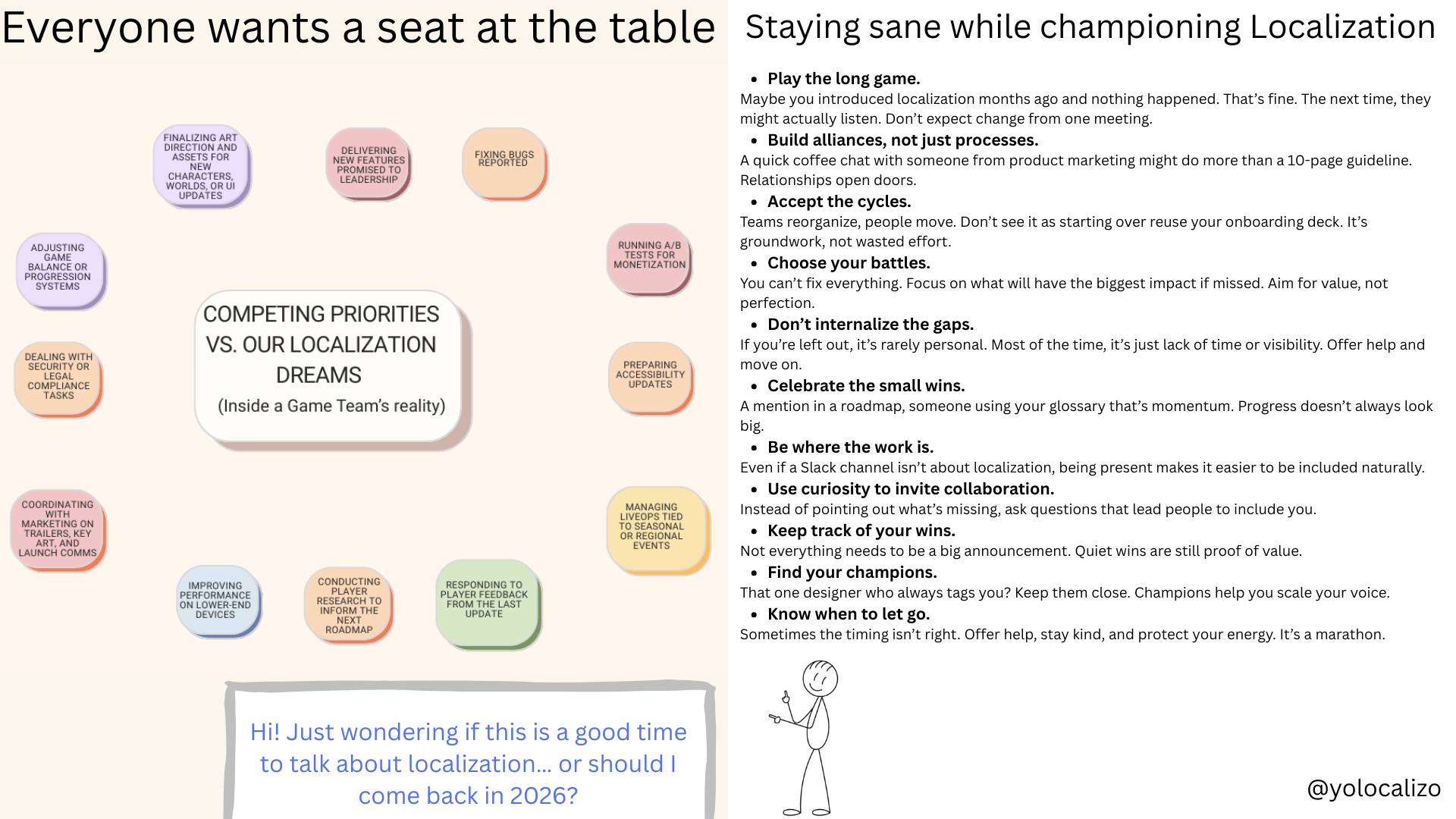
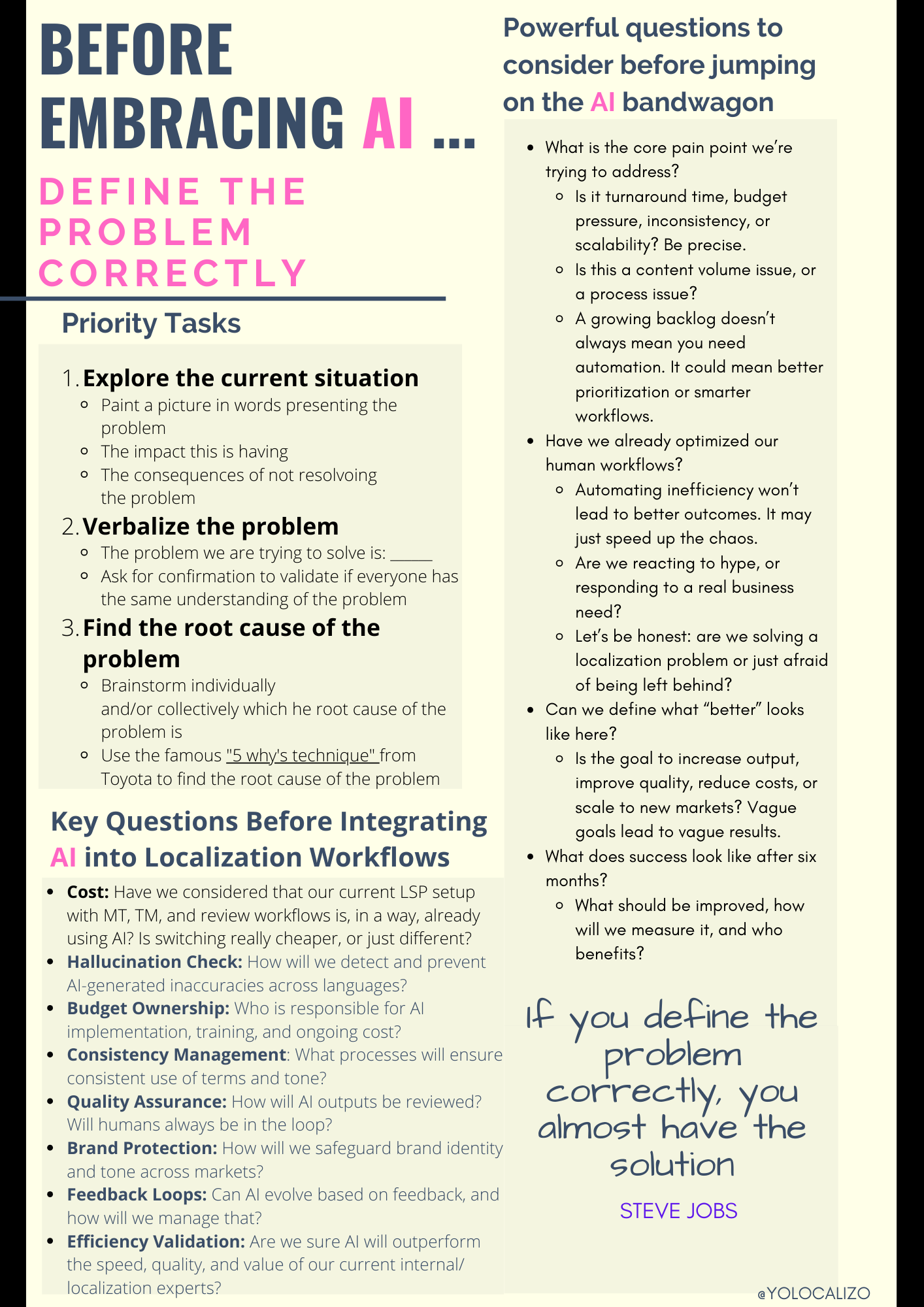
This feels like a pivotal moment. Localization teams are being asked to support more markets, move faster, use AI responsibly, and show impact, not just output. Expectations are higher than ever, but many teams are still trained mainly for execution. We are strong at delivering localization work, yet we often struggle to move from output to outcome and to clearly explain the impact of what we do.